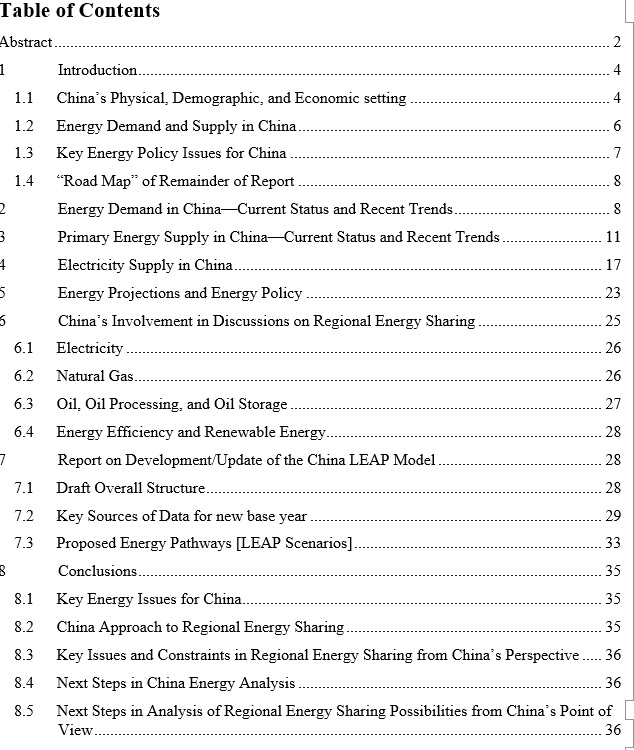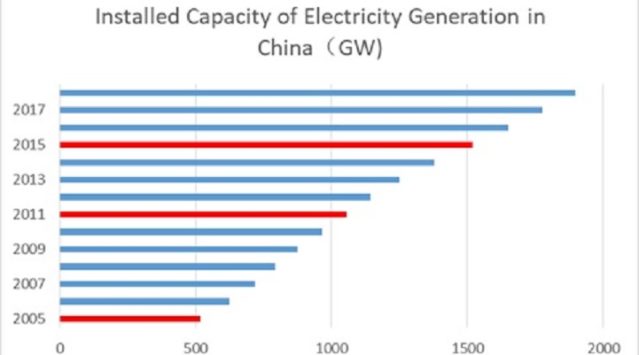WANG YANJIA, GU ALUN
NOVEMBER 24, 2019
I. INTRODUCTION
In this Special Report, Wang Yanjia and Gu Alun summarize the status of China’s energy sector and recent trends, and describe projections of China’s energy future in the context of its energy policies. China’s energy imports have been rising in recent years, and environmental, energy security, and other challenges related to energy use mean that China is actively seeking opportunities to cooperate on current and future transboundary energy projects with its neighbors and other nations.
Excerpts from and table of contents of the full report are provided below. The full report is downloadable here (PDF, 1.5MB)
Wang Yanjia is Professor Emeritus at the Institute of Energy, Environment and Economy, Tsinghua University. Gu Alun is a Researcher at the Institute of Energy, Environment and Economy, Tsinghua University.
The views expressed in this report do not necessarily reflect the official policy or position of the Nautilus Institute. Readers should note that Nautilus seeks a diversity of views and opinions on significant topics in order to identify common ground.
This report is published under a 4.0 International Creative Commons License the terms of which are found here.
Banner image: Installed Capacity of Electricity Generation in China, 2005 through 2018, based on data from China Electric Power Yearbook.
II. NAPSNET SPECIAL REPORT BY WANG YANJIA AND GU ALUN
STATUS OF CHINA’S ENERGY SECTOR, RECENT TRENDS, AND CURRENT AND EVOLVING ENERGY POLICIES
NOVEMBER 24, 2019
Summary
China is the second largest economy, the largest energy consumer, and the largest GHG emitter in the world. After experiencing 40 years of rapid development, China plans to keep its GDP growth at a reasonable level but more moderate level for the coming decades. In order to improve local air quality and contribute to global GHG emissions reduction, China is encouraging a “switch coal to gas” program that has increased its gas import dependency to 40%. Together with China’s high oil import dependence, the shift to imported gas raises a further concern regarding energy security. China is making great efforts to build friendly relationships with neighboring countries and oil/natural gas supplying countries. Meanwhile, China is investing a huge amount of capital in LNG terminals, transboundary oil pipelines, and oil refinery plants to secure the capacities to handle more imported energy in the future. Increasing the scale of energy cooperation is the focus of China’s current regional energy cooperation efforts.
Although structural change both in the economy, as reflected in GDP statistics, and in the energy sector, has made progress in the past, the heavy manufacturing sectors and coal still play dominate roles in the economy and in energy supply, respectively. The fast growth in output of energy-intensive products, such as steel, cement, has driven energy demand increases and, and as a result manufacturing is still the largest energy consumer among all sectors, even as the energy intensities of manufacturing of energy-intensive products has decreased significantly.
China is facing challenges to realize the transition from coal-dominated to clean/low carbon energy systems. This transition must meet the energy demands for economic and social development, reduce local air pollutant emissions, and honor the nation’s commitment to addressing climate change simultaneously.
8. Conclusions
8.1 Key Energy Issues for China
China plans to keep its GDP growth at a reasonable level for the coming decades. How to meet the nation’s energy needs for economic and social development while using cleaner energy is the most important issue for China. China would like to improve local air quality and contribute to global GHG emissions reduction, replacing coal by using cleaner fuels, especially using more natural gas as an important option to be adopted. Meanwhile the fast growth in natural gas imports raises a further concern regarding energy security, since China’s oil import dependence is quite high already. China is making great efforts to build friendly relationships with neighboring countries and oil/natural gas supplying countries.
8.2 China Approach to Regional Energy Sharing
As an important part of the current international cooperation field, energy cooperation is increasingly a focus of the countries in Northeast Asia. In the Northeast Asia region, there are energy exporting countries such as Russia and Mongolia, as well as nations with high energy demand such as China, Japan, South Korea and the DPRK.
The development of energy cooperation between Russia and China, Japan and South Korea has already happened to some extent. Increasing the scale of energy cooperation is the focus of current regional energy cooperation efforts.
8.3 Key Issues and Constraints in Regional Energy Sharing from China’s Perspective
Implementing power connections will be easier than implementing other proposed cooperation modes. There are also many activities ongoing to promote power interconnections:
- On 2016/10/26, the countries of the Northeast Asia Power Network signed a cooperation memorandum;
- In 2016, the potential economic and environmental benefits from connecting power grids (opportunities and challenges) were identified, as well as the huge initial investments required, and issues associated with uncertainty of future fuel prices began to be discussed in the context of the Northeast Asia Power Network; and
- On 2018/11/1, the Northeast Asia Regional Power Interconnection and Cooperation Forum (electricity trade) group was formed.
There is ongoing research regarding electric power grid interconnections in Northeast Asia, and international groups have been organized to discuss the opportunities and challenges. The final results shown in all grid interconnection scenarios indicate that economic benefits in the form of total cost reductions depend mainly on the fuel cost saved by shifting to cheaper fossil fuel or to renewables. Achieving these economic benefits and distributing them fairly among cooperation partners are likely to be a major challenge to implementing grid interconnection.
8.4 Next Steps in China Energy Analysis
The working group will use our updated LEAP model to analyze China energy further with the consideration of GHG emissions reduction, regional energy sharing, and possible new energy policies to be issued in the near future.
8.5 Next Steps in Analysis of Regional Energy Sharing Possibilities from China’s Point of View
Regional energy sharing is a team effort that requires the involvement from all countries in the region. China is very active in encouraging international cooperation not only in the region but also globally, and any response and cooperation from other countries is welcome.

III. NAUTILUS INVITES YOUR RESPONSE
The Nautilus Asia Peace and Security Network invites your responses to this report. Please send responses to: nautilus@nautilus.org. Responses will be considered for redistribution to the network only if they include the author’s name, affiliation, and explicit consent


